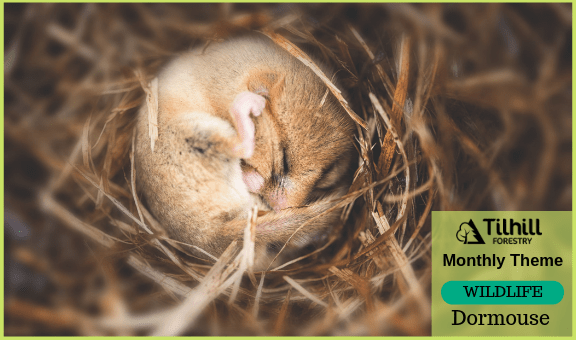What?
Dormice are one of the most rare and endangered animals in the UK. They are fully protected under domestic and European law.
Their decrease is due to loss of deciduous woodland and hedgerows and a decline in coppice management. Dormice are strongly associated with Hazel.
They live mainly in deciduous woodland, scrub and hedgerows but can also be found in conifers, especially PAWS (Planted Ancient Woodland Sites). They are rarely seen but their presence is confirmed by the signs they leave behind.
They are mainly found in the southern counties of England and much of Wales. They are also present in a few localities in the Lake District.
What to look for:
Dormice are rarely seen, being nocturnal and very secretive. They also hibernate in nests on the ground. The best way to evidence their presence is to look out for gnawed hazelnuts although this depends on fruiting hazel being present. Both nuts to the right have been eaten by dormice. Look out for a neat smooth circular cut to the inside of the opening and tiny radiating teeth marks on the outside. Woodmice also take hazelnuts and eat them in a similar way but the inside of the cut shell is not smooth.
You may also find their summer nests in brambles and low growing shrubs. Typically, nests are spherical, grapefruit sized and made from strips of honeysuckle bark and leaves.
Why?
Avoid prosecution: It is a criminal offence to:
• Damage or destroy a breeding site or nesting place of a dormouse.
• Deliberately kill or injure a dormouse or deliberately disturb a significant group of dormice
Download the full Toolbox Talks PDF here



